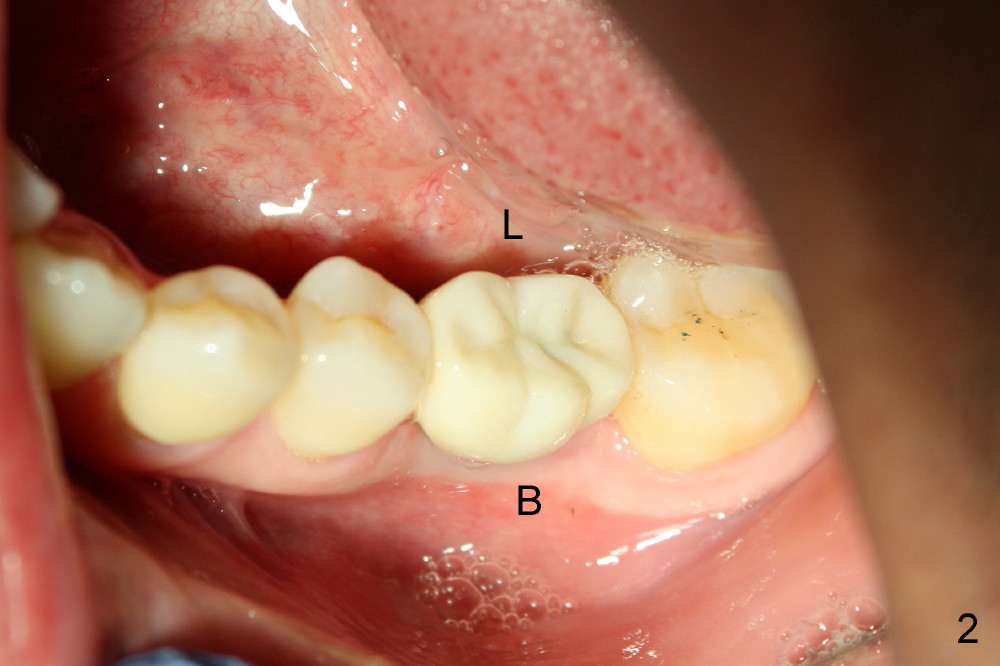Implant Crowns
- Occlusal table: buccolingual width 80% of normal crown
(Fig.2)
- Slopes: not so steep (shallow). Lateral movement may damage the
implant stability
- Do not use too much spacer. Implant/abutment is rounded.
Otherwise retention will be poor
- Retention groove: better not to block with die spacer. Make
retention slot as distinct as possible. Extend all the way to the
margin
- Do not over extend the margin. Implant never gets caries.
Over-extension is not good for the gingiva
- If bite is not stable or not right, return with metal framework
(casts). We will get bite registration. The models will be re-mounted
- Pour every one of impressions and trim every die. Sometime it is
difficult to make good impression for every single prep, every corner.
Use all of the trimmed dies to make relatively good
margin
- If impression is too bad, call doctor's office. Impression
will be retaken without any question
- Check occlusion, centric and lateral and protrusive, in the lab, before
sending out the case
- Occlusal contact should be light for the
implant crown
- Make a small hole in the occlusal surface (if requested) so that excess cement can
escape
- PFM crown should have enough metal support (framework). Otherwise
porcelain will chip easily
- If occlusal clearance is not enough, make metal occlusal surface
Technicians
Xin Wei, DDS, PhD, MS 1st edition 11/06/2013, last revision
12/25/2013

